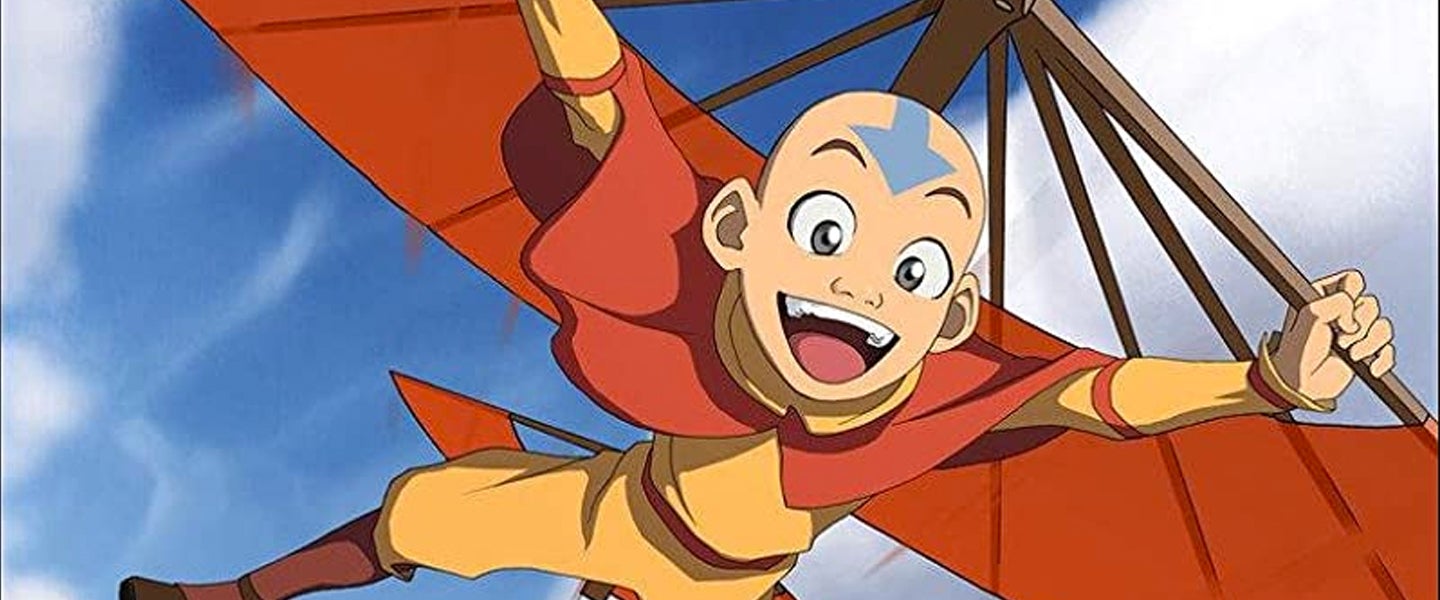It’s a world dominated by fascism, injustice and inequality, where good people are afraid to act and leaders encourage intolerance, where revolution seems to be the only solution but also utterly impossible. It’s also a world where adorable, fluffy bison with platypus tails soar through the air. This is the world of Avatar: The Last Airbender, the 2005 kids cartoon that has suddenly become one of the most popular streaming shows in the country.
Game of Thrones wants what Avatar: The Last Airbender has, it really does
— Anthony Smith (@AnthonyBLSmith) May 20, 2020
The beloved Nickelodeon series has consistently stayed in the Top 5 of Netflix’s most-watched U.S. offerings since it returned to the service on May 15th — far too popular to be explained by a few young adults indulging in a bit of comforting nostalgia. Avatar: The Last Airbender has a near-universal appeal that encompasses today’s kids, yesterday’s parents and basically anyone who’s looking for a comforting, delightful new fantasy world to lose themselves in during the pandemic — something that Netflix’s rankings prove.
Children’s animated series rarely reach this level of popularity, and it’s not often that high fantasy reaches the mainstream, either (the other four titles in Netflix’s top 5 at press time are the new Steve Carrell comedy series Space Force; the Jeffrey Epstein: Filthy Rich documentary; Adam Sandler’s incredibly bleak crime drama Uncut Gems; and a new Netflix rom-dram series called Sweet Magnolias.) But The Last Airbender is a kids’ show to its core — no subtle sexual innuendos for parents forced to watch here — and the fantasy is as high as, well, a flying bison with a platypus tail.
Thanks to director James Cameron, anyone who attempts to describe Avatar: The Last Airbender is required to clarify that the Nickelodeon series has nothing to do with giant, blue CG aliens who have tentacle sex. Instead, it’s a world of four nations, all deeply inspired by Asiatic and Arctic cultures, and themed to one of the four classic elements: air, water, earth and fire. Each nation has inhabitants who can control their country’s element more or less like a superpower, who are called Benders. One hundred years ago, the militaristic Fire Nation conquered the Water Tribe, is currently battling the Earth Kingdom and has massacred the Air Nomads.
As the show’s opening states, only the Avatar — the one being who can control all four elements — can bring harmony to the world, but they disappeared just as the Fire Nation began their attack. In the present, the young Waterbender Katara and her brother Sokka discover a 12-year-old boy trapped in ice and free him, and discover he’s not only the world’s sole living Airbender, but the missing Avatar, too. The three of them journey across the world so Aang can learn to control the other three elements to defeat the Fire Nation.
That’s a lot of fantasy lore to throw at any audience, young or old, and that’s just the basic premise, but Avatar handles this initial world-building with deftness and confidence, anchoring viewers who might be having a hard time wrapping their head around all the weirdness with the show’s greatest strength — its characters. Like in many great stories, trying to describe the characters with a few adjectives is an injustice to them and the show, even though it has to be done: Aang is a goofy, carefree kid at heart, overwhelmed by having the responsibility of saving the world; Katara is the highly principled, easily impassioned mom of the gang; Sokka is the (non-magical) warrior and easily nonplussed comic relief; and Toph, who joins “Team Avatar” in Season Two, is a pint-sized, sarcastic badass who has used her blindness to become an incredibly powerful Earthbender.
Despite these simple descriptions — and despite any preconceptions you might have about a cartoon starring teenage martial artists/wizards — the characters are fully realized in a way that puts many “grown-up” shows to shame. They’re all heroic, tragic, goofy, misled, determined and afraid. They’re kids, but they’re people, enhanced by a deft combination of the show’s sharp writing, excellent voice acting and exquisite animation, which is heavily influenced by Japanese anime.
Honestly? Avatar does everything deftly. It is, arguably, one of the most finely constructed kids’ shows ever. While the show is serialized, telling one long epic of Aang’s maturation into the Avatar and the ultimate battle with the Fire Nation, most episodes tell one small, contained story, making it perfect viewing for younger kids. Those smaller stories are used to explore the characters’ journeys and their relationships, but they continually build on each other, so that Aang, Katara, Sokka and Toph each distinctly evolve over the show’s three seasons.
The same amount of care can be seen in practically every aspect of the fantasy world, far beyond what you would (and probably should) expect from children’s entertainment. Cultural consultants were hired to make sure the show’s varied East Asian inspirations were portrayed authentically. A martial artist advisor was brought on not only to make sure the fights looked cool — which they very much do — but so each elemental magic fighting style had its own distinct feel and movements, which gives them an authenticity that makes them, and the series as a whole, more captivating.
There’s also one more thing that makes The Last Airbender great, and what makes it so perfect right now: Avatar does what all the best children’s entertainment does, which is refuse to lie to kids and tell them the good guys always come out on top and everything always works out. This is a series that isn’t afraid to show how awful people can be to each other, and how terrible the world can be as well.
Aang and his friends may win a lot of battles against the Fire Nation and other foes, but they don’t win all of them, and the show is very clear that one battle does not win a war. Katara faces sexism when she seeks Waterbending training with another Water Tribe. Prince Zuko, the show’s first antagonist, bears a giant burn scar because of his father’s physical abuse. Sokka suffers through the devastating death of a loved one. And Aang, after he’s first revived, tries to return to the Air Temple and his people, only to learn that they’re all long dead. All these missing Airbenders aren’t secretly imprisoned somewhere to be rescued later on in the series — it’s genocide, plain and clear, although the show doesn’t use the word. Aang doesn’t stumble upon piles of skeletons of his former Air Nomads, nor does he scream to the heavens at the cruelty and evil necessary to wipe out an entire people. He is shocked, and saddened, and comes to understand how necessary his task as the Avatar is, which drives him forward in his quest.
Avatar’s truest power lies in presenting these awful, real-world horrors to kids, making them comprehensible while keeping them from being completely overwhelming — something that surely holds immense appeal to anyone currently feeling overwhelmed by the real world’s horrors, which is basically everyone. The show knows that monsters aren’t real, but people can be monstrous. Then it softens this harsh truth, without concealing it, making it something that can be mentally and emotionally processed by tweens or, well, anyone. That’s something special, and something that feels desperately useful right now.
Avatar: The Last Airbender is an escape to be sure, but there’s a reason so many people are taking the trip right now — well, lots of reasons, really — and you could be one of them. Just turn off the news for a bit, fire up Netflix and catch a ride on the first flying bison you see.

